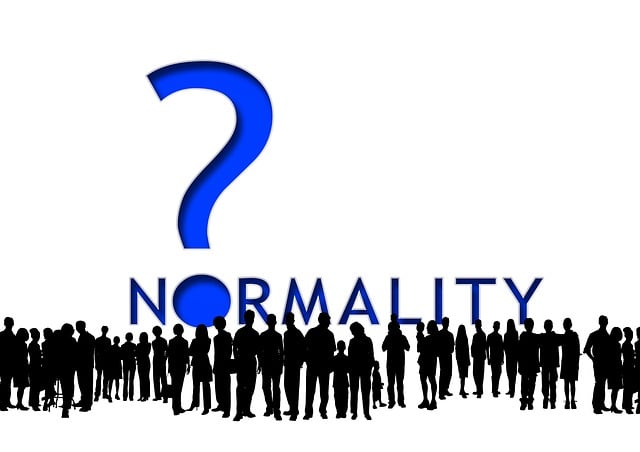In psychology and psychiatry, it really means average or typical, but we too easily think of it as a synonym for how everyone is supposed to think and feel
Before you read
Change the word in CAPITALS to fill in the blanks (WORD FORMATION):
The concept of normal has a complicated history in medicine. In the 19th century the French 1. ……….. [PHYSICS] Claude Bernard wrote of identifying statistical 2. …….. [DEVIATE] from population norms to identify the causes of diseases. Around the same time, Jonathan Sholl writes in a recent essay in Aeon, Adolphe Quetelet applied “statistics to the human body to find a series of ‘types’ across a range of individual 3. ……… [VARY]. Because every 4. ………. [VARY] could be subject to this statistical tool, it seemed that averages could explain anything: hence, 5. …….. [HIGH], 6. …….. [WEIGH], blood pressure, heart rate, birth and death rates etc. could all be presented in nice, even bell curves.”
For instance, he invented the 7. …….. [CONTROVERSY] body mass index (BMI). The average became the ideal, writes Sholl. “[T]he individual was 8. ……….. [SYNONYM] with error, while the average person represented the true human being.” The standards set by population averages are controversial. (…)
In Le Normal et le Pathologique (1943), writes Sholl, French philosopher Georges Canguilhem “challenged the status quo of 9. …….. [NORMAL], suggesting it failed to capture what 10. ………. [EVOLUTION] biology says about variation. He sought to use the term norm to refer to the different processes, from the internal regulation of hormones to shifting 11. ……… [DIET] regimes, to remind us that, no matter how rare or deviant an individual seems, he could still be viewed as normal if the behavior ensured 12. ……… [SURVIVE] in a given environment.” In 1978 Czech philosopher Jiří Vácha distinguished the meanings of normality; it could mean frequent (as a mode) or average (as a mean) in the population as represented in a typical bell curve. It could also mean adequate as in free from deficiency or defect or optimal in the sense of being physically fit or mentally sharp. The meaning of normal, Sholl writes, often “slip-slides among these different meanings and tropes, from the orthodox and standard to what is expected and good” and “has important 13. ………… [COSEQUENTLY], especially if it is given a privileged position in the world.”
To check your answers/read the whole article, go to: https://blogs.scientificamerican.com/observations/what-is-normal-anyway/
Key: 1. physiologist; 2. deviations; 3;4. variations; 5. height; 6. weight; 7. controversial; 8. synonymous; 9. normality; 10. evolutionary; 11. dietary; 12. survival; 13. consequences
Glossary
- to lose it – (informal) to stop being able to control your emotions and suddenly start to shout, cry, or laugh
- doom – (especially unhappy) destiny
- spike – a very high amount, price, or level, usually before a fall
- feedback loop – a system for improving a product, process, etc. by collecting and reacting to users’ comments
- trade-off – a kind of compromise that involves giving up something in return for getting something else
- to creak – to make a short, high-pitched sound when moving
- hairsbreadth – a very small distance or amount
- to venerate – to worship, adore, be in awe of
- jittery – feeling nervous or behaving nervously
- undue – greater or more extreme than you think is reasonable or appropriate
- turmoil – a state of confusion, disorder, uncertainty, or great anxiety
Practice makes perfect
Listen:
https://www.ted.com/talks/ted_audio_collective_introducing_am_i_normal_with_mona_chalabi
and fill in the gaps with missing words:
I’m Mona Chalabi and I’m a data journalist. Numbers help me make sense of a chaotic world and they help me to understand how I 1. ……… into that chaos. I find myself asking questions like : ”How many close friends do I actually need?”, ”Should men be as concerned about their 2. ……… as I am?”, „Is teeth whitening a 3. ……?” „How long will it take me to get 4. ….. my 5. ……….. ?” „Am I normal?” There’s something that’s 6. ……… and comforting about the boxes of a 7. ……… . But the truth is life is 8 ……. and numbers have their limitations. 9. …. …… how helpful they can be, numbers never tell the whole story. And the stories they do tell.? Well, they are often a lot more complicated than they seem.
Key: 1. fit; 2. fertility ; 3. scam; 4. over; 5. breakup; 6. orderly; 7. spreadsheet; 8. messy; 9. No matter
Use the words in Glossary to fill in the sentences below:
1. The high rent is a …………… for a comfortable living
2. Tim got lost in the ………… of the attack.
3. This is a clear case of ………….. pressure by a large country against a small one.
4. The energy ……… is like nothing we’ve ever seen before.
5. I’m afraid she’s ……….. it – we have to take her to the psychiatrist.
6. The market is very ………. and under pressure from a whole variety of other things.
Key: 1. trade-off; 2. turmoil; 3. undue; 4. spike; 5. losing; 6. jittery
Explore more to create your own teaching-learning experience!
Is It The ‘New Normal’ Or A Tale Of A Boiling Frog?
A Leadership Dilemma
Read:
(2694)





